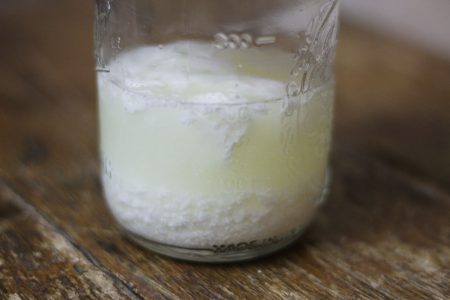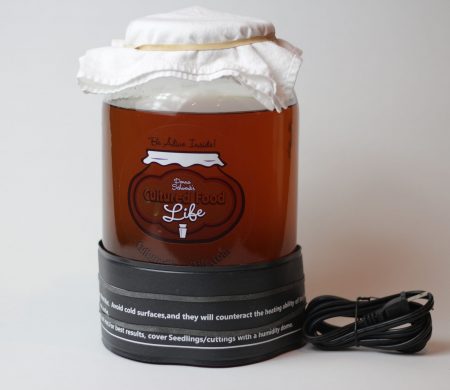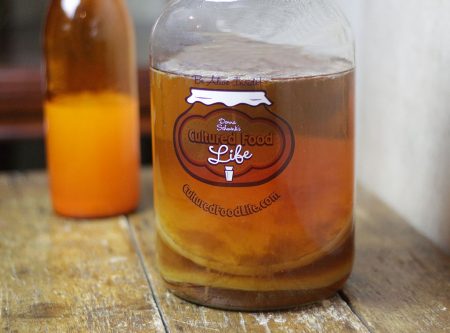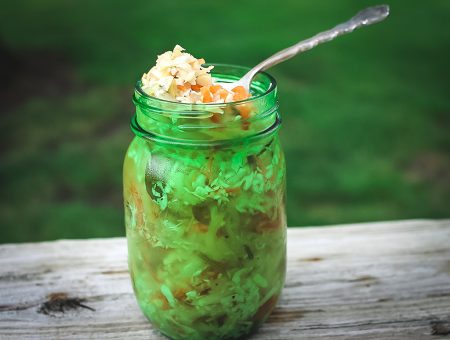
When Are My Kefir, Kombucha, and Veggies Done Culturing?
How to tell when your cultures are done
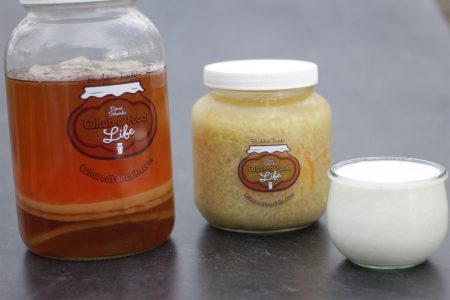
There's a little science behind this, and since culturing your food is an artisanal process unique to you and your home, I can help you understand it and hopefully maximize the health benefits.
Each of these cultured foods is made with microbes that are invisible to you. Using a culture is going to give you quite a few more beneficial strains of microbes. They will culture your food and eat the sugars out of your food whether it be sweet tea, milk, or vegetables. This gives a food source to those microbes and they begin to consume the sugars in the food and then convert those sugars into probiotics.This will perfectly preserve them and load your food with lots of healthy microbes and keep out pathogens. However, the longer you ferment, the fewer probiotics you will have as these microbes start to run out of food. Here are some guidelines to help you know when your kefir, kombucha, and cultured vegetables are at their peak of probiotics and health benefits. These three foods can make a huge difference in your life and health.
This is what I call — The Trilogy.
How to tell when your kefir is done
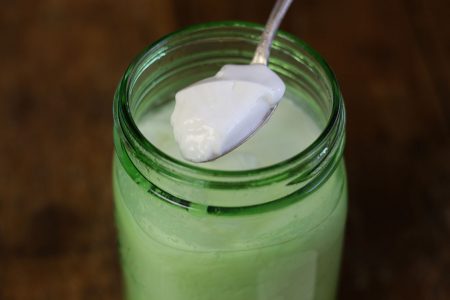
- It also may be because you added too much milk, or you added a prebiotic like Prebio Plus and your microbes are full of food and still haven't converted it all to probiotics. Giving your kefir a prebiotic such as Prebio Plus will give your kefir extra food and it might take longer to ferment since your kefir has lots of food to eat. It can also ensure that your kefir stays creamier and has a better flavor
- Temperatures in your home will also greatly affect your kefir. Temps below 68 degrees F take longer than 24 hours to ferment. Temps above 73 will make it ferment faster and it will often separate into whey and curds. This isn't bad, it just means it's gonna taste super sour!
Many people think that the texture is most important when determining if it's done. Although this can also be a sign it's done, it can be tricky because if you let it ferment too long, it will start to separate into whey and curds and become thin. It will also get really sour tasting which means you have over fermented it. This is not bad, it's just not as appealing. I have another article that shows a video and explains this in greater depth. Thick and Thin of Kefir
Again, the best way to tell is to taste it. "Tart tasting" means your kefir is done.
How to tell when your kombucha is done
A jar of kombucha fermenting on your counter is an exciting adventure. Watching a new SCOBY form on the top of your jar each time you make a fresh batch is rewarding and fun.
Temperature and the strength of your starter tea will determine how fast your kombucha ferments. Tasting your kombucha will tell you if it's done, but it can be a little tricky if you don't have a spout on your brewing vessel. The best way to taste your brew and not disturb the SCOBY too much is to place a straw down along the side of the jar in your brew, put your finger over the top of the straw opening and pull the straw out and then taste it. Your brew should not taste sweet, but slightly tart. If it is too sweet, then let it ferment longer as you don't want to get sugar instead of probiotics. You also don't want to let it over ferment and turn to vinegar. It will always have a slight vinegar taste but it shouldn't taste like straight vinegar. This means you've over fermented it. When it reaches the stage where it tastes like vinegar, many of the good yeasts and bacteria have died and you won’t receive as many benefits. Also, if it’s over fermented, you will not be able to second ferment your kombucha because the good yeasts will have died and won’t be there to ferment it again. Hopefully, you will begin to think of all your ferments as living things that need food just as you do.
A lot of people will tell you to test your brew with pH strips to determine if it's done. We don't do this because it's too complicated and it doesn't work very well, if at all, and is a needless expense. We always go by taste. This is the easiest and most effective method to determine if your brew is done. You'll get better at tasting and detecting the perfect balance in your kombucha the more you do it. It's part of the process of becoming an artisan fermenter and discovering how to help your body get more probiotics.
How to tell when your cultured vegetables are done
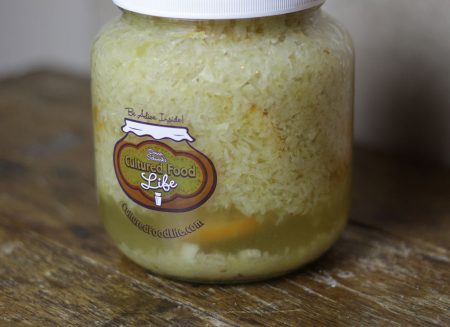
- Here are my recommendations for getting the greatest amount of probiotics and the best taste from your cultured vegetables. If you're making anything with cabbage, it will take six to seven days to ferment on your counter. If your home is cooler than 68 degrees, then it could take a few days longer. If you're making other vegetables that are not cabbage, such as cucumbers, cauliflower, tomatoes, broccoli, or other vegetables, then they usually only ferment for three days on your counter unless the recipe specifies something different.
Again, the best way to tell if they are done is to taste them. If the cabbage or veggies taste sour and tart (like kraut or pickles), then they are ready to eat and be placed in the refrigerator. Some veggies like carrots don't get overly tart, since they contain so much sugar. It's best to not ferment them for longer that three days since they can change in texture. Remember, your veggies will continue to ferment in your fridge, although very slowly, and the taste will develop much like a fine wine - often getting better with age.
- You should also see a few bubbles on about day three, but the bubbles are less likely if your home is on the cooler side. You will also notice your vegetables rise up in the jar or float to the top and you will have a cloudy brine at the bottom. All of this is normal and these are good signs that your vegetables are fermenting properly. When in doubt taste them, tart or sour means the microbes have eaten the sugars out and they have made lots of probiotics. Fermenting them for longer periods can diminish the probiotics as the bacteria can begin to run out of food.
Listen To My Podcast
Do you wonder when your kefir, kombucha, and cultured vegetables are done fermenting? I have a few tips to help you understand how and when they're at the perfect place with lots of probiotics and will taste the best
References I talked about:
Are you on the list?
Sign up today and I'll send you my free Getting Started Guide!
Each week I'll send you updates, tips, recipes, and more! You might even be a winner of my weekly giveaway! (starter cultures, memberships, and more!)
Come be a part of my cultured food family!

